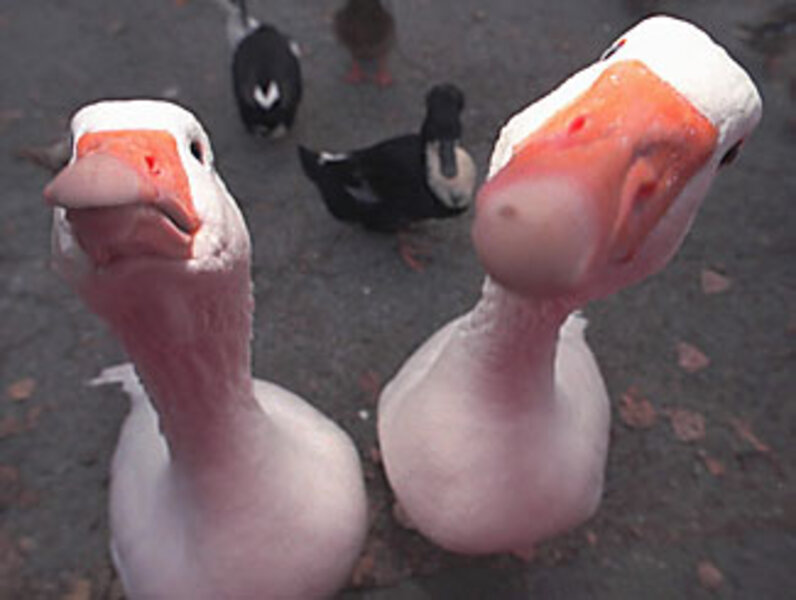Get to know your wild neighbors
Loading...
With kids spending more time outside, the Humane Society of the United States (HSUS) wants to set the record straight for you about some of the most common wildlife myths.
"These popular myths have been around forever, passed on from generation to generation," says Laura Simon, field director of urban wildlife for the HSUS. "We are hoping that educating the next generation will ultimately result in a better coexistence between humans and wildlife."
Myth No. 1: Feeding bread to geese and ducks is OK.
Fact: Bread is bad for all birds because it offers little nutritional value. Feeding can also lead to dependency in ducklings and goslings; they may fail to learn how to find native foods on their own. Some birds can even become aggressive about being fed.
Myth No. 2: If you find a fawn alone, she has been orphaned.
Fact: It is actually very common to see fawns alone because the mother will "park" her babies somewhere and visit only two to three times a day. This helps avoid attracting predators.
Until the fawn is 4 weeks old, you will rarely see her with Mother. Instead, she relies on camouflage and lying still for protection during this period.
Myth No. 3: If you touch a baby bird, the parents will abandon it.
Fact: Birds have a limited sense of smell but are strongly bonded to their chicks. Parents will not abandon chicks handled by humans.
The best thing humans can do if a baby bird falls from its nest – and is not well feathered and clearly learning how to fly – is to put him back in it. Watch carefully: The parents will return to feed him.
Myth No. 4: Bats get tangled up in your hair if they fly near you.
Fact: The last place a bat wants to be is in your hair. Bats navigate using a complex sonarlike system called echolocation which allows them to "see" their world with precision.
The misconception about bats flying in hair is based on a bat's swooping flight patterns when trapped in a confined space such as a house. The reason they swoop is not to fly into your hair but to stay airborne.
Myth No. 5: Cats belong outdoors, and it is not fair to keep them inside the house.
Fact: Indoor cats live safer lives because they are not exposed to threats such as moving cars on busy roads. Outdoor cats, no matter how well-fed, may hunt and kill wildlife such as baby rabbits, chipmunks, and baby birds that have not yet learned to fly. Wildlife and cats are both at risk when people let their cats out.
Myth No. 6: Opossums are vicious and rabid.
Fact: Opossums are relatively benign creatures who defend themselves by hissing, teeth-baring, and drooling. These are not a sign of rabies but rather a bluff to scare off potential predators. When their act doesn't work, they play dead.
Myth No. 7: Some Canada geese stick around because they have forgotten how to migrate.
Fact: Geese that live in one place year-round do so through no fault of their own. Our "resident" birds are descendants of captive-bred geese introduced by wildlife agencies over several decades to restore huntable populations. Geese were also released by people who thought they would simply look nice on their ponds. As a result, transplanted geese never learned to migrate from their parents, but they still thrive in our suburban landscapes.
• To learn more about urban wildlife, visit http://humanesociety.org/wildneighbors.
Source: The HSUS Wild Neighbors Program





